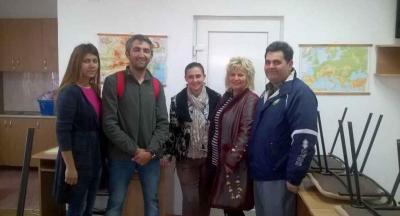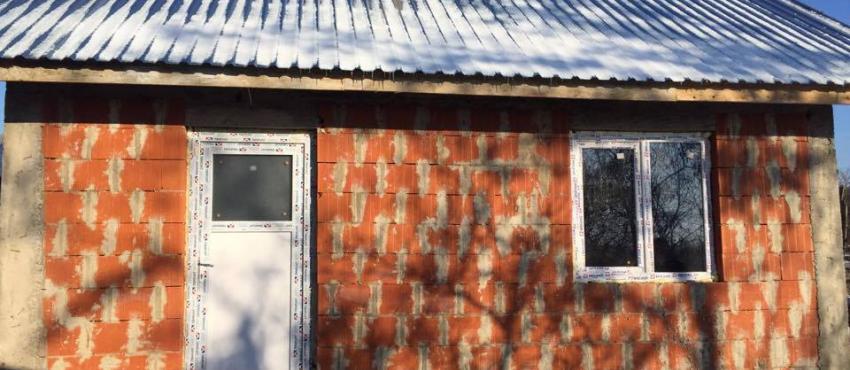Alesd
*Disclaimer: The information and views set out in this page do not necessarily reflect the official opinion of the Council of Europe and/or the European Commission. Neither the Council of Europe, the European Commission nor any person acting on their behalf may be held responsible for the use which may be made of the information contained therein.
Last update 03/10/2016
Alesd is a small city located in Bihor County in Romania and is part of the North West Development Region of Romania. Alesd is the administrative centre for 4 localities - Alesd, Pestis, Tinaud and Pădurea Neagră. According to the latest census information, Alesd has a total population of 10,066, with 12% of the total population from the Roma community (1,213 people), representing the Calderasi and Geambash Roma groups. However, the unofficial local estimates are slightly higher than the recorded figure which places the population at around 1,500 in the municipality of Alesd - most of them living in the Obor Neighbourhood. Beside Roma, other minorities live in Alesd among them are Hungarians and Slovaks.
After the fall of communism in December 1989, the industrial sector in Alesd suffered a sharp decline and in 1998 Alesd was declared “deprived area”. This attracted foreign investment and allowed the creation of around 1,500 jobs, which are mostly in the textile and construction material industries. A large segment of the working age Roma are employed in these industries, while another significant share are involved in agriculture.
Roma citizens living in the Obor community face issues related to education, housing and infrastructure as well as employment and health. Their most important needs were identified as priorities by the Community Action Group (CAG) which was formed through the ROMACT process, described below.
The ROMACT Process
In October 2015 with the Mayor Zeno Tipter’s signature on the Letter of Commitment, Alesd joined the ROMACT programme. Within three months of joining the programme, the process led to the agreement between the Community Action Group (CAG) and the Local Authorities on the Local Action Plan which was afterwards approved by the Municipal Council through an official Decision on the 27th of January 2016, for the period 2016-2020. The Community Action Group started by formulating their short-term priorities:
| Short-term priorities of the CAG | Objective 1 | Objective 2 | Objective 3 |
|---|---|---|---|
| Education | Re-initiate the “Second Chance” education programme for adults | Ensure the means of transportation for children living far away from the school | Increase the work time of the school mediator |
| Infrastructure | Repair the roads deteriorated by the works on the sewerage system | Connect to the water and electricity networks houses lacking them in the Roma neighborhood | |
| Housing | Solve the legal issues around land and house ownership in the Roma community | ||
| Health | Employ an additional health mediator | ||
| Other | Train the staff of the Multifunctional Centre on Roma culture and traditions | Organise regular CAG meetings | Organise activities promoting and preserving Roma culture; organize celebrations for the 8th of April |
The long-term priorities of the CAG are:
| Long-term priorities of the CAG | Objective 1 | Objective 2 | Objective 3 | Objective 4 |
|---|---|---|---|---|
| Employment | Create more work opportunities for Roma | |||
| Housing | Provide land plots for new houses for the Roma community | Build social housing | ||
| Education | Take measure to decrease the school dropout rates of Roma children | Support young Roma in high-school so as to avoid dropout | Organise awareness campaigns for Roma parents on the importance of education | |
| Infrastructure | Replace the pipelines of the water network in the Roma community | Build a protection wall against floodings in the proximity of the Cris river |
The Local Action Plan – drafted jointly by the CAG and Local Authorities and adopted by Municipal Council includes the following measures, which were made in response to most of the priorities set by the Community Action Group:
| Objectives included in the JAP | Objective 1 | Objective 2 | Objective 3 | Objective 4 | Objective 5 | Objective 6 |
|---|---|---|---|---|---|---|
| Education | Re-initiate the “Second Chance” education programme for adults | Increase the work time of the school mediator | Expand the after school programme | Organize activities to prevent school dropout of Roma children | Ensure the means of transportation for children living far away from the school | Organise awareness campaigns for Roma parents on the importance of education |
| Housing | Create a support programme for the most deprived Roma families | Equip the multifunctional day center from the Roma community with furniture and other needed equipment | ||||
| Health | Employ a health mediator | Monitor the implementation of the national health programme | Organize periodical meetings with the doctors from the city to discuss the health problems Roma face | |||
| Infrastructure | Repair the roads deteriorated by the works on the sewerage system | Connect to the water and electricity networks houses lacking them in the Roma neighborhood | Replace the pipelines of the water network in the Roma community | Provide land plots for new houses for the Roma community | Build social housing | Build a protection wall against floodings in the proximity of the Cris river |
| Employment | Organize periodical meetings with the companies in the area | Organize trainings for the members of the Roma community | ||||
| Other | Organise intercultural and Roma culture trainings for teachers | Organise activities promoting and preserving Roma culture; organize celebrations for the 8th of April | Solve the legal issues around land and house ownership in the Roma community | Solve the issues related to Identity documents for all the community members |
In order to facilitate the implementation of the Action Plan, ROMACT supports the municipality staff members through coaching and expertise on applying for EU funds and EU project management.
In addition to the short-term priorities described above, in September 2016 the Community Action Group from Alesd - Obor put forth the idea of a fundraising campaign for a Roma citizen living in the neighbourhood who was in a dire situation with her four children. A campaign was initiated under the name of "A home for Simona" which aims to gather resources for the reconstruction of the house of Ms Simona Csonka, and refurbish it with the necessary items to improve the Family’s living conditions. The Community Action Group contributed with the search for donations and through volunteering on the construction site, while the municipality of Alesd offered services related to the proper connection of the house to electricity and other amenities. More on this story here.
In January 2016, the Local Council adopted an action plan for Roma population, for the period 2016-2020.
| Trainings provided for the local administration | Beneficiaries |
|---|---|
| Project implementation | 4 persons from the city hall |
| Coaching on Integrated Local Development (DLI 360) in marginalized communities where there is Roma population | The city hall |
| Activities involving the community action group | Beneficiaries |
|---|---|
| Training on community development and civic participation | The community action group |
| Coaching on setting up a NGO | The community action group |
| Expertise provided to the local administration | Beneficiaries | Status |
|---|---|---|
| Replacement of the water and sewage network in Obor neighborhood | Roma community 1.200 direct beneficiaries | Finalized |
| Households connection to electricity | Roma community 150 direct beneficiaries | Finalized |
| National Rural Development Programme, Measure 322 - Village renewal and development, improving basic services for rural economy and population and upgrading of the rural heritage, Axis III - Quality of life in rural areas and diversification of the rural | Roma children | Finalized |
Results:
A sample of projects related to ROMACT:
The replacement of the sewage network in the Roma community (Obor) was finalized.
An NGO from CAG members was created.
The campaign “A home for Simona” was launched and finalized with the construction of a new house for Simona, a Roma member of the Alesd – Obor community, and her family of four children.
The procedures for the building of the dam near the river have begun.
The renovation of the road that goes round the community is included in an infrastructural project (from EU funds).
The water network rehabilitation for the whole municipality (included also the Obor neighborhood of the Roma community) was finalized in the beginning of July 2017.


